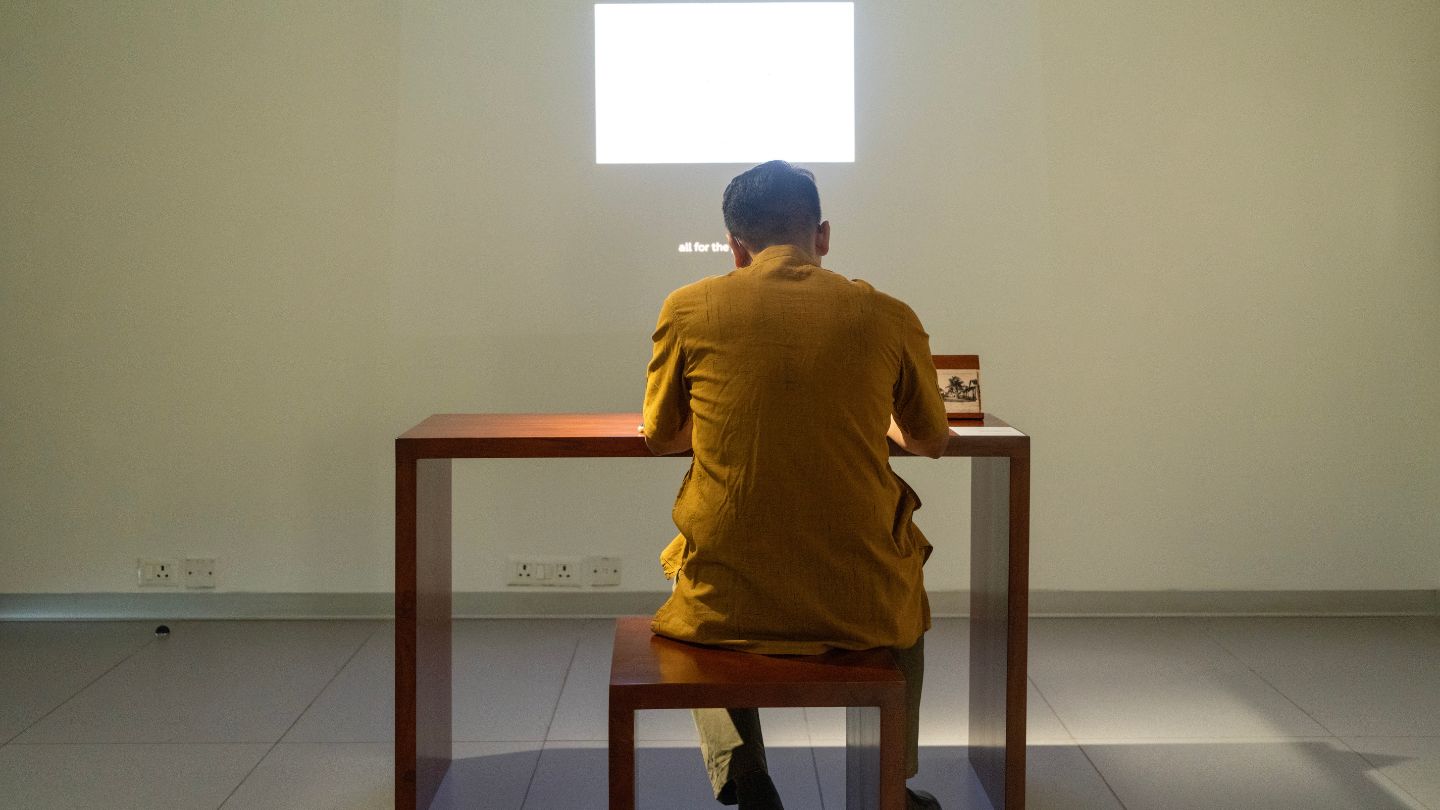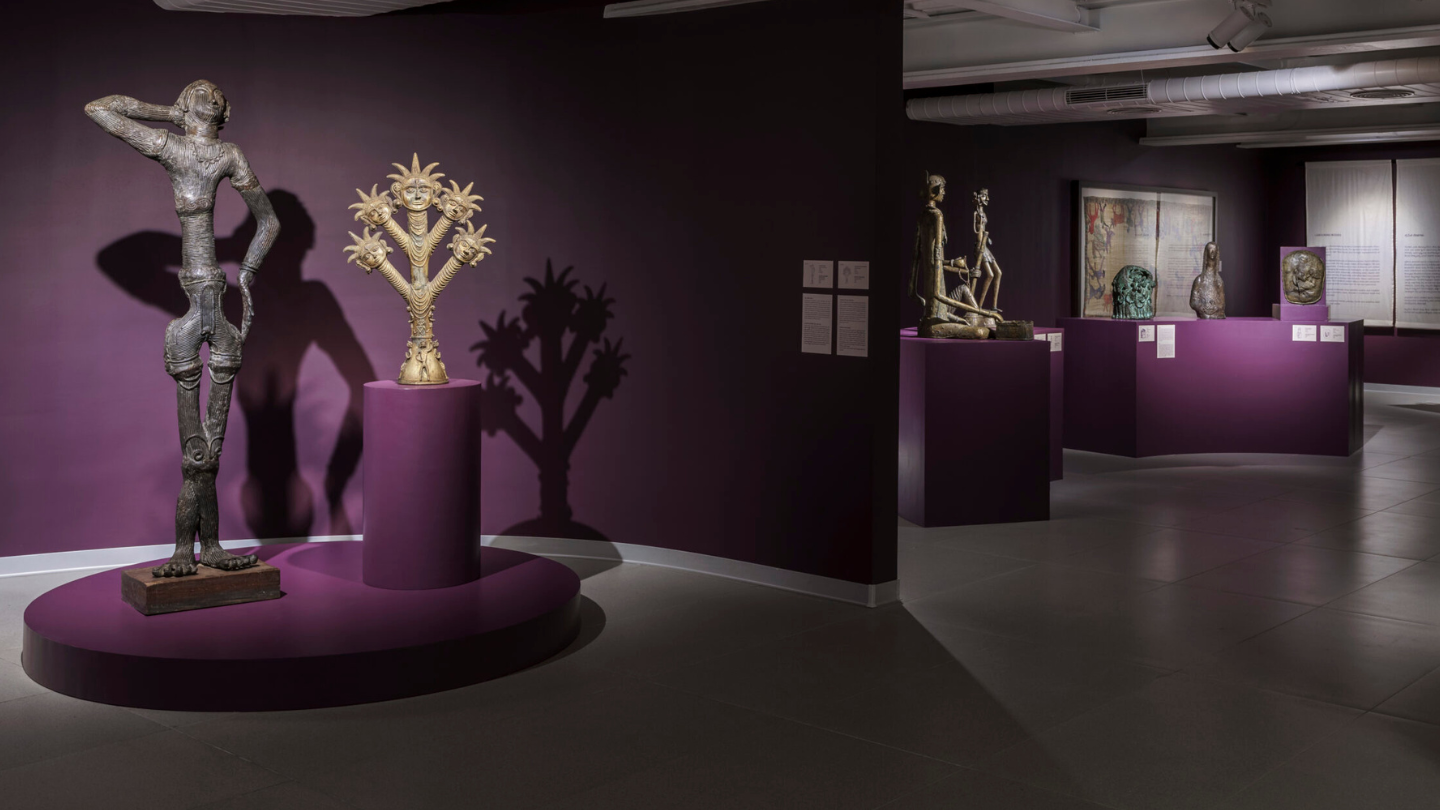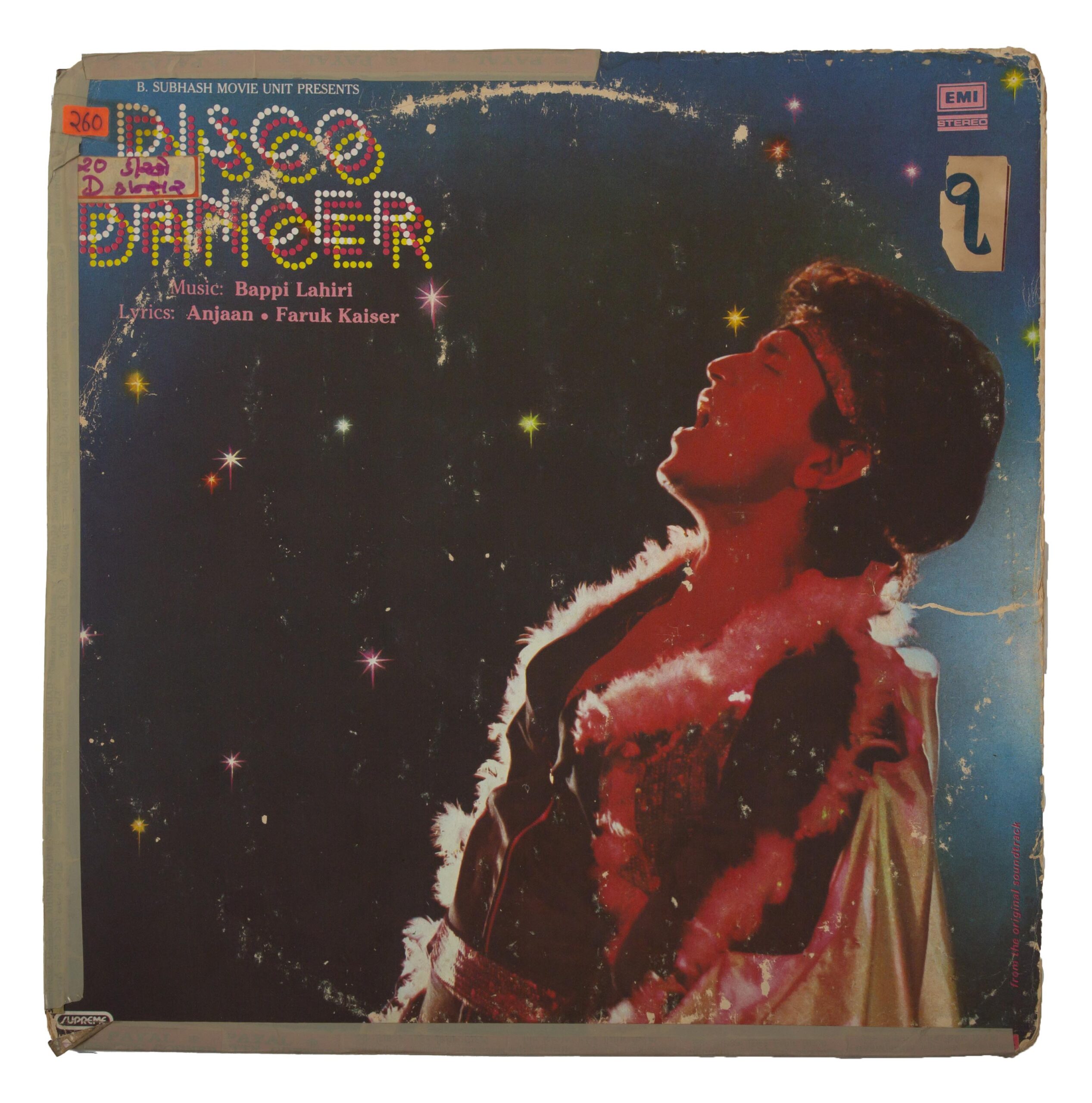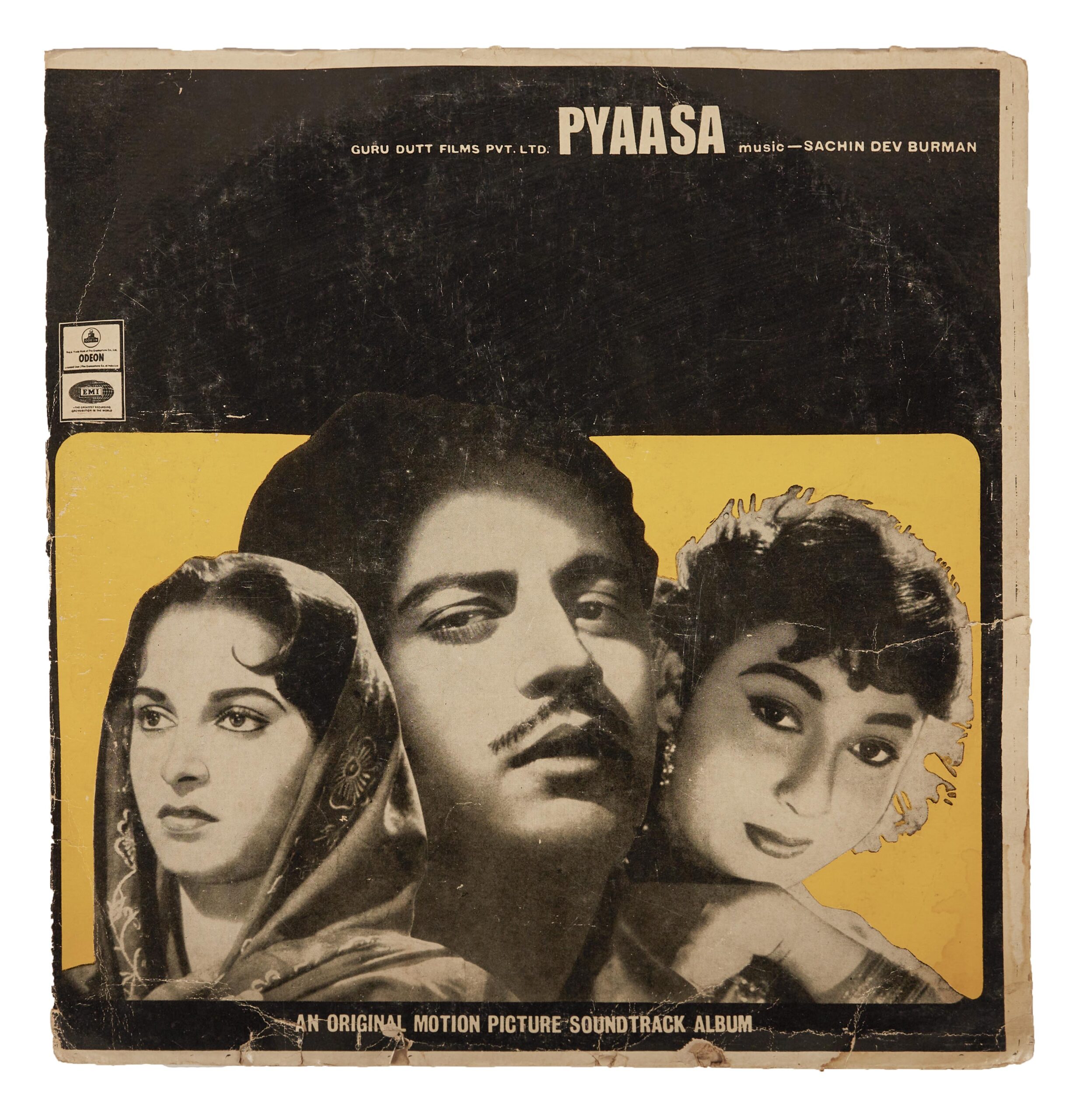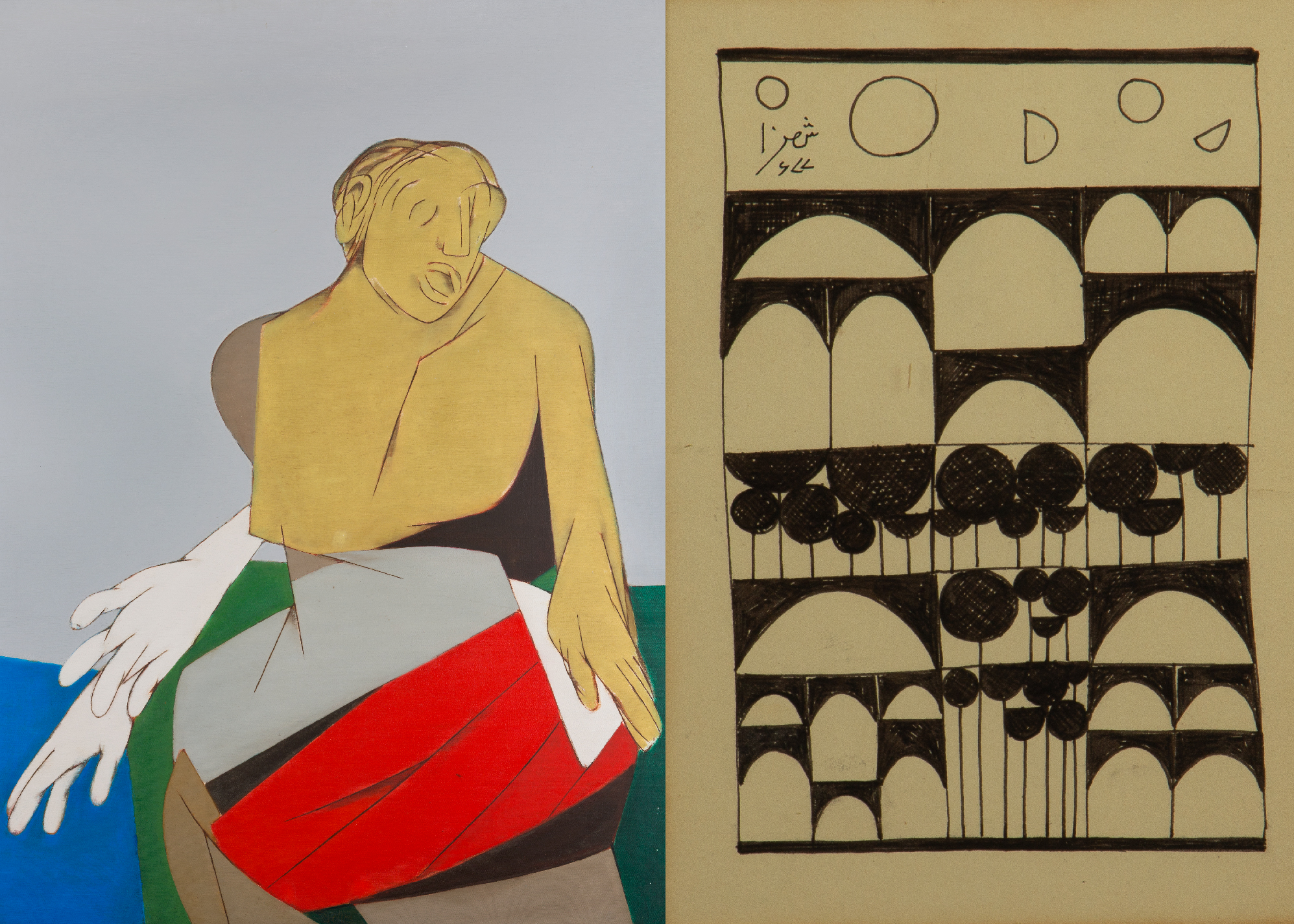Essays
Naya Daur (1957)
Dinesh Khemani
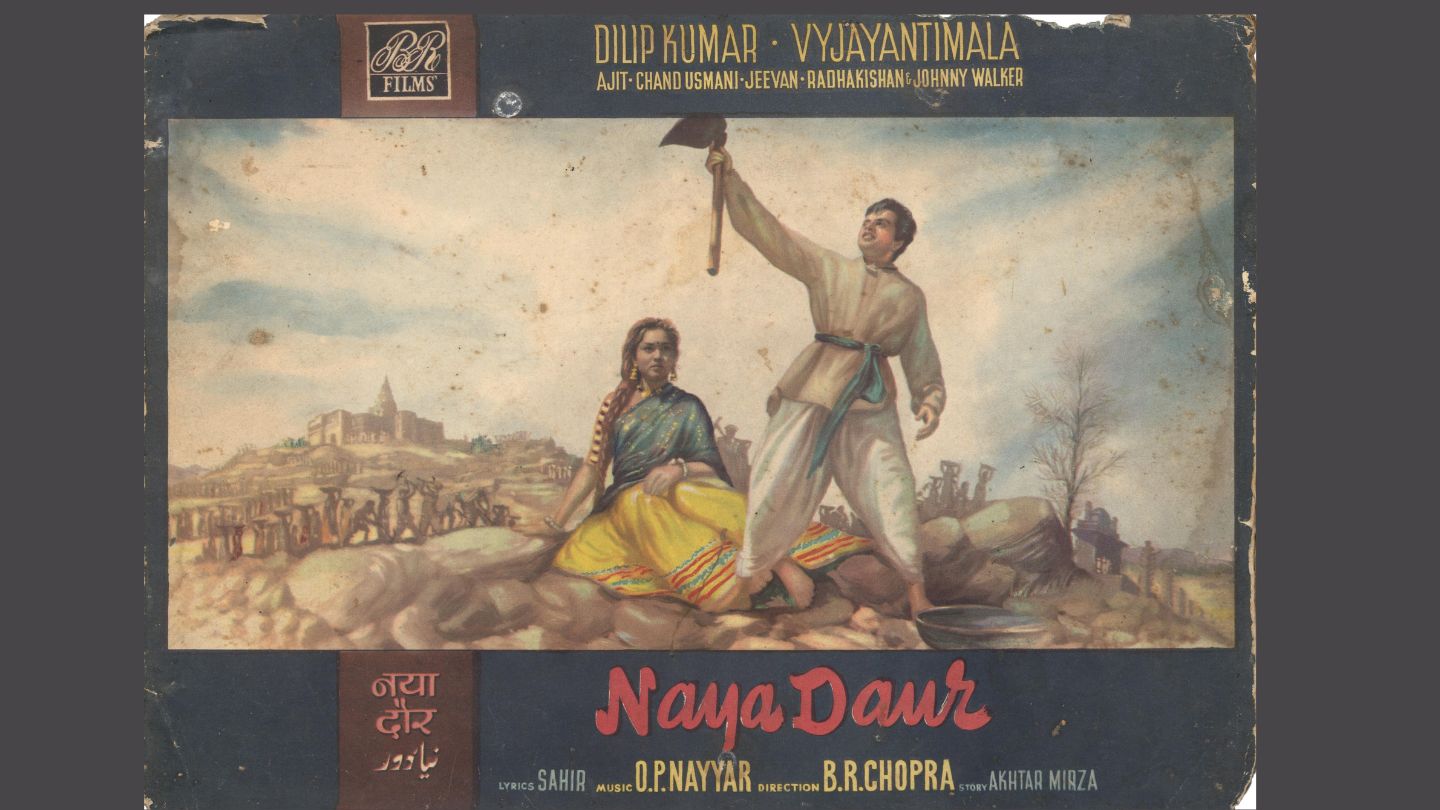
Description:
The music booklet is of the film Naya Daur directed by B.R. Chopra in 1957 starring Dilip Kumar, Vyjayanthimala and Ajit in lead roles. The front cover features an illustrated image of Dilip Kumar standing on rocks holding a sickle in the right arm raised in the air, with Vyjayanthimala sitting next to him. In the background are people working. The booklet consists of the synopsis of the film in English and Devanagari, sketches of the characters of the film, the lyrics of the soundtrack of the film in Devanagari and Arabic and stills from the film. The back cover features two stills from the film with Dilip Kumar and Jeevan fighting.
Research Note:
“Aaj ki duniya mein machine ne tarakki nahi ki hai, admi ne tarakki ki hai … aaj tak admi machine banate aaye hai … machine ne kabhi kisi admi ko nahi banaya hai(In today’s age machines have not advanced, humans have advanced … till today humans have made machines … a machine has never made a human)”.
The above lines are muttered by the benign mill owner while admonishing his haughty son, moments before the decisive race between the lorry and horse-carriage is about to commence. The perennial debate of machine replacing human labour and its disastrous consequences on the community is the driving conflict of the film Naya Daur (1957). The human question seems to be pervading our lives again as advancements are being made in artificial intelligence technology.
The decade of the 1950s commenced with the five year Planning Commission that looked to rapidly urbanise India’s cities and villages. The project of industrialisation was in full force at the time and the popular Hindi cinema of the time reflected that shift in national priorities. With films like Mother India (1957), Ganga Jamuna (1961); the spirit of nationhood found thorough expression.
Naya Daur, released in 1957, was the second highest grossing film of the year behind Mother India. In the film, the humane owner of the mill – Seth Maganlal – is a socialist who values the importance of the working class and they share an amicable relationship. The son on the other hand is symbolic of capitalist greed with no regard for the workers’ plight and wants to bring in mechanisation to increase production and double his profits. These seemingly contradictory ideologies were in conjunction with the Nehruvian vision of nationhood in post independent India adopting a mixed economy approach (refer to footnote). Dilip Kumar playing the role of the tonga wallah represents the humane figure propagating the clarion call of modernisation.
The narrative deals with the perils of progress at the cost of human labour. Set in the rural countryside of Karanpur, the film explores the pertinent theme of man versus machine. The film echoed Prime Minister Nehru’s call to modernise the cities and villages of India around 1952. Pitting the onslaught of modernisation against the more traditional modes of transport, like the tonga wallah (horse carriage driver), the film espouses the message of co-existence of tradition and modernity. A format of modernisation that considers the welfare and well-being of the people, in this case the workers.
Francine Frankel, in her book India’s Political Economy 1947-1977, notes the “paradoxical” blend of socialist values and planning and private enterprise that formed the basis of the Indian state in accordance with the Gandhi-Nehru ideals of national growth and development. Nehru spoke of it “a third way” which takes the best from all existing systems- the Russian, the American and others and seeks to create something suited to one’s own history and philosophy. The film deals with the question of labour and the rampant exploitation of workers with the onslaught of the mechanisation drive gripping the country in the post-independent years. The father, Maganlal’s attitude towards the workers is more of a benevolent patriarch and his son Kundan is relatively brazen in his approach. When Maganlal takes on a pilgrimage to Kashi, temporarily handing over his business to his son Kundan played by the actor Jeevan, Kundan being a city bred man surveys the land and decides to double his profits. He orders a machine from the city and lays off some of the workers as they are inept to handle it. Subsequently in the film, a bus service is introduced in the village that leaves all the tonga wallahs without a job. This leads Shankar (Dilip Kumar) to take umbrage with Kundan about the manner in which he is introducing modernisation to the village, leaving poor workers unemployed. The scene where Shankar challenges Kundan to race his lorry against the horses, a symbolic race between man versus machine that culminates in a victory for humanity.
Similar films that deal with the exploitation of the working class are explored in Shree 420 (1955), Mother India (1957) and Paigham (1959). All three films won the National Film Awards in their respective years. The urban space being immoral, cruel and arrogant and the village being a site of community, virtue and moral values is explicitly laid out in these films. The presence of the industrial capitalist, the “modern man” is characterised through costume design of Kundan who wears a shirt, pant, blazer and is seen carrying a horse whip in his hand. While the village people wear simple clothes, a cotton cloth tied across their loins up to their knee (dhoti), kurta and a turban. Naya Daur ends with Kundan embracing Shankar and thereby is a step towards the unionisation of workers in the modern development project of the nation-state.
Naya Daur is successful in espousing an ideology where humans and machines converge instead of upholding one against the other. Though the central theme of the film is developed with humans and machines in an antagonistic relationship, it fosters a harmonious relationship by the end. The film seems very much aligned with the Nehruvian vision of India including the working class in its ambition for progress and development.
Footnote
Mixed economic system is the system where the central government authority makes decisions regarding economic decisions( what, how and for whom to produce) along with the free play of market forces in the private sector.
References
Chakravarty, S. S. (2011). National identity in Indian popular cinema, 1947-1987. University of Texas Press.
Vikas Pathe (2021) Communication, development and Hindi Cinema: Reading of NayaDaur, South Asian Popular Culture, 19:3, 277-287, DOI: https://doi.org/10.1080/14746689.2021.1965313
The early life of music director o.p. Nayyar. (n.d.). Largest Collection of Punjabi Music and Books. https://apnaorg.com/prose-content/english-articles/page-160/article-2/index.html

